In 2022, Tigets, the prestigious society that recognizes the sites of cultural interest and the most authentic tourist experiences in nine countries around the world, selected the castle at Almodóvar del Río as ‘The Most Remarkable Venue’ in Spain. The following year, 2023, National Geographic Magazine chose the castle at Almodóvar del Río as one of the thirteen most impressive fortresses in Andalucia. Much of the seventh series of Game of Thrones was filmed at the castle at Almodóvar del Rio in 2016.
By Nick Nutter | Updated 4 Jun 2023 | Córdoba | Places To Go |
Login to add to YOUR Favourites or Read Later


Almodóvar from the Castle
The first fortifications to be built on La Floresta, the 252 metre high hill overlooking a meander in the Rio Guadalquivir, was an Ibero-Roman oppidum. Around the year 740 AD, during the days of the Córdoban Caliphate, the Muslims built a defensive watchtower overlooking the small town below that they called Almudawar Al-Adna. In the year 756, the watchtower became part of the estate of the Moorish Prince Al’delMalik Ben Qatan and from 758 onwards it passed into the hands of the Emirate of Córdoba in the reign of Abderraman I going on in the 10th and 12th centuries to belong to the Taifa of Carmona, subsequently to the Taifa of Sevilla and finally to the Almohad Empire.


Guarding the Castle
It was during the 12th century that the Legend of Zaida was born.
In 1091 AD, the Almohad army landed at Tarifa with the aim of conquering the Alcazar of Córdoba, the home of prince Fath Al Mamum and his wife, the princess Zaida.
The prince sent his wife to take refuge in the castle at Almudawar Al-Adna.
On the 28th March 1091, the prince was killed during an attack on the Alcazar. It is said that, at the precise time of his death, Zaida awoke and went up to the top of the Tower of Tribute and saw the white horse belonging to Fath Al Mamum, galloping towards her.
The following day the Almohad army captured the castle and imprisoned Zaida in the dungeons where she died of a broken heart.
The legend says that, every year, during the night of the 28th March, Zaida’s cries and lamentations can be heard throughout the walls of the castle.


The Courtyard Casillo de Almodóvar
The castle was to remain in Muslim hands until 1226 when it was handed over to the Castilian king Fernando III as part of the pact he came to with Muhammad I ibn al-Ahmar, who was allowed to retain the kingdom of Granada that extended over the modern day provinces of Málaga, Granada and Almeria. During that 500 year period of Muslim domination the castle was extended and renovated many times. The Castilian kings, Alfonso XI (1313 – 1350), Peter I (1350 - `1369) and Henry II of Trastamara (1369 – 1379) continued to expand the castle during the 14th century.


The Dungeons
The dungeons at Castillo de Almodovar have hosted some illustrious guests such as Doña Juana de Lara (wife of Prince Don Tello, stepbrother of King Pedro I) and Rodrigo Alonso Pimentel, 1st Duke of Benavente (the illegitimate son of King Henry II of Castile and his mistress Beatriz Ponce de León.)

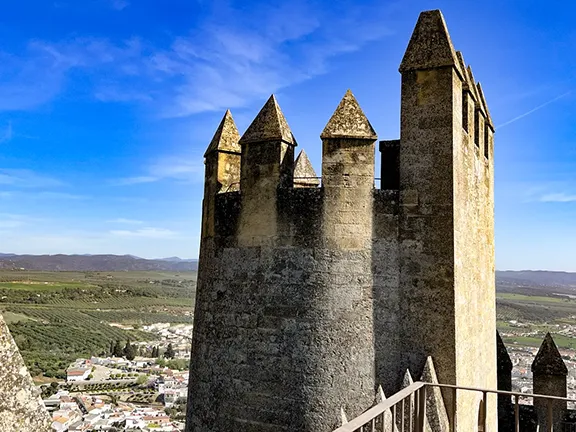
Round Tower Castillo de Almodóvar
Over the succeeding centuries, the castle crumbled into ruins until, by the end of the 19th century, only the stumps of the original towers, a vestige of the once grand walls and roofless buildings remained.
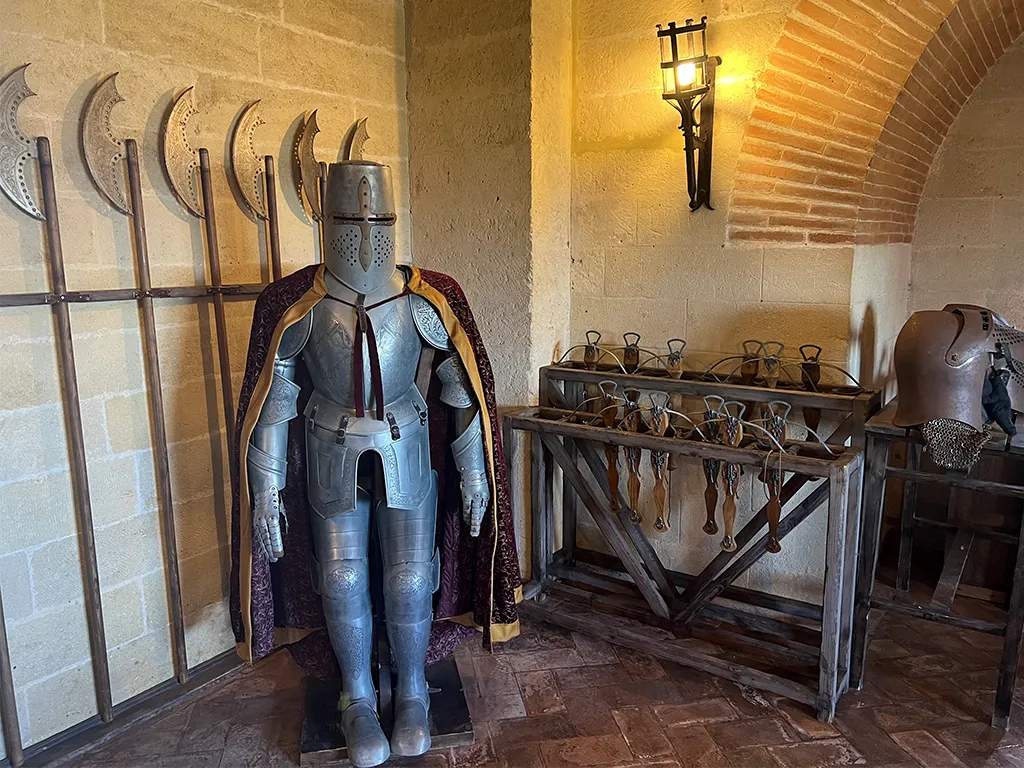
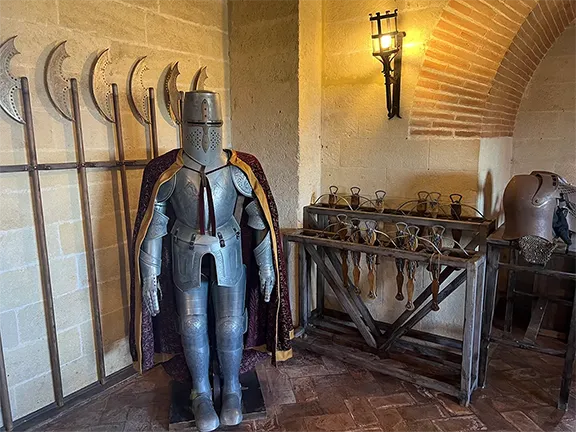
Arnourt Castillo de Almodóvar
In the late 19th century, ownership of the castle passed down the Count of Torralva family line to the 12th Count, Don Rafael Desmaissières and Farina. He visited the Almodovar fortress with his good friend, the architect, Don Alfonso Fernandez Casanova (who was also responsible to restoring Seville Cathedral), to inspect its condition. They were struck by the devastated ruin but were also conscious of its significance within the history of Andalucia and Spain. The pair decided to take on what would prove to be the biggest project of their lives to which they would devote all their time and money in order to return Castillo de Almodóvar del Río to its former glory. They determined that the restoration should be as sympathetic as possible to restore the castle to how it would have looked at the height of its grandeur during the early 15th century.
The restoration works began in 1901. At the start, work focussed on the construction of a road from the town to the top of the hill. They were then able to transport the enormous stone blocks which would be used to restore the walls, battlements and towers. Close to 6,000 cubic metres of stone from different quarries was used throughout the entire restoration. Some 800 workmen spent 36 years working to revive the monument. Despite the economic crisis which the country was experiencing, the First World War and the continuous political changes, during the reconstruction period the Count of Torralva brought many years of economic stability to the town of Almodovar owing to the 240,000 pesetas in labour wages he invested in the works. Over more than a quarter of a century practically all of Almodovar’s inhabitants participated in the task of restoring the castle.


Castillo de Almodóvar del Río
Today, the castle is a close approximation to a 15th century Andalucian fortress. Only the neo-Gothic main residence to one side of the courtyard provides any incongruity. Even then, the stone of which it is built has mellowed alongside the stone of the walls that surround it.
The tour provides a great opportunity to experience life in a castle of that era because it is a complete renovation that would have seemed familiar to any 15th century knight transported through time. The walls, courtyard and nine towers are all there with barely a chip in them. The chapel could open for services tomorrow and the refectory could seat about 100 diners.
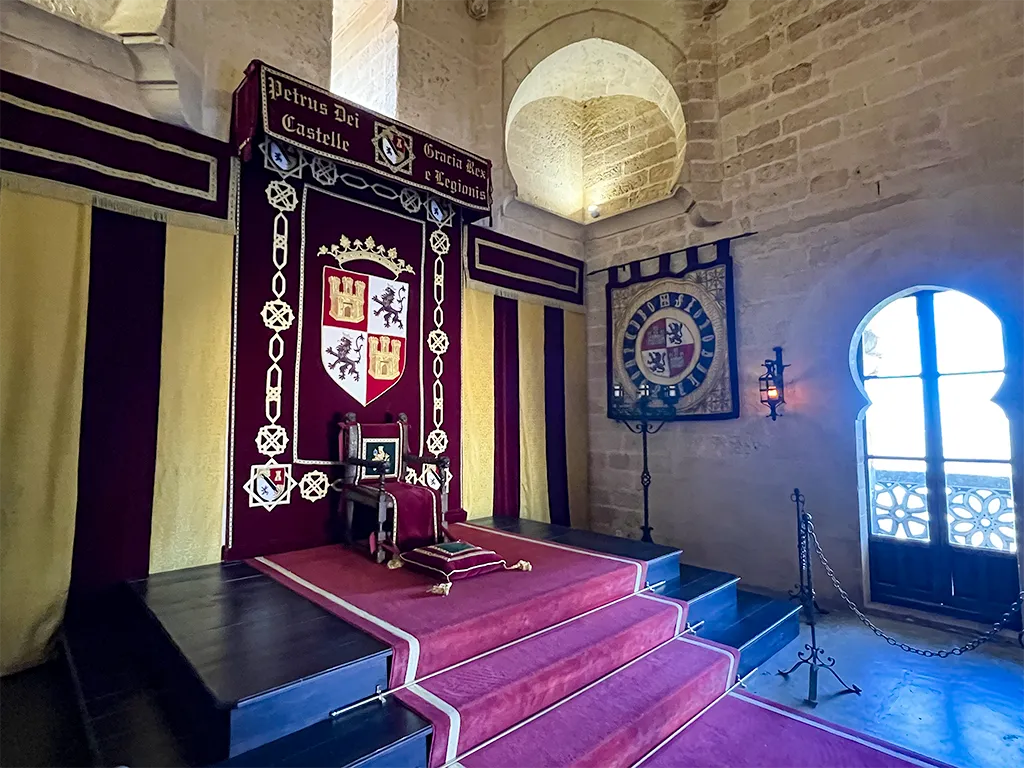

Throne Room Tower of Tribute
Of particular interest is the Tower of Tribute. This is where the kings took oaths of loyalty from their subjects and where they would grant feudal privileges. It is what is known as a flanking tower, being separated from the main castle and joined to it by a small bridge that could be easily demolished in the event the castle was taken by an enemy.
At 33 metres tall, this is the highest tower in the fortress. Notice the coat of arms of Castile on the façade. It is thought to be from the period of the reign of Alfonso XI.
The lowest part of the tower is the dungeon, above which there is a torture chamber. A large hall tops this morbid reminder of the dark ages. Above the main chamber is the roof of the tower with its embrasures and crenelations.


Most Impressive Castles in Andalucia
This is the tour of the most impressive castles in Andalusia, according to 'National Geographic': Almodóvar del Río (Córdoba), La Iruela (Jaén), La Calahorra (Granada), Vélez Blanco (Almería), Alcazaba de Málaga, Burgalimar (Jaén ), Niebla (Huelva), Alcazaba de Granada, Carmona (Seville), Alcazaba de Almería, Antequera (Málaga), Alcaudete (Jaén) and Castellar de la Frontera (Cádiz).
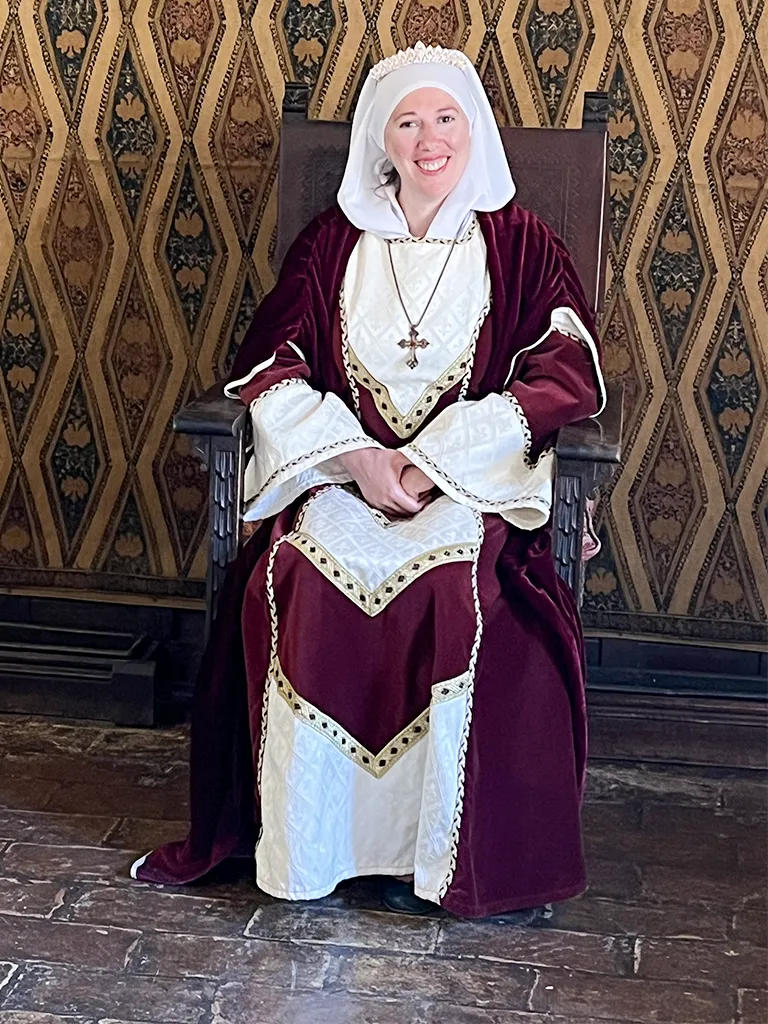

Much of the seventh series of Game of Thrones was filmed at the castle at Almodóvar del Rio.
Daenerys Targaryen arrives in Westeros with her army and three large dragons and begins to wage war against the Lannisters, who have defeated her allies in the south and west of Westeros. Jon Snow leaves Sansa in charge of Winterfell and visits Daenerys to secure her help to defeat the White Walkers and the Army of the Dead. He mines the dragonglass at Dragonstone and begins a romance with Daenerys. Arya and Bran (now the Three-Eyed Raven) return home to Winterfell; the Starks execute the treacherous Littlefinger. Tyrion persuades Daenerys not to destroy King's Landing, reminding her that she does not want to be simply a queen of ashes. Instead, Jon goes north of the wall to capture a wight to prove to Cersei that the fearsome army of the dead exist and are coming; in doing so, his group is pinned down and nearly killed. Daenerys rescues them with her dragons but the Night King kills one of her dragons and makes it part of his army. The undead dragon later destroys part of the Wall and the dead march through. Bran learns that Jon is really his cousin, Aegon Targaryen, the legitimate heir to the Iron Throne.